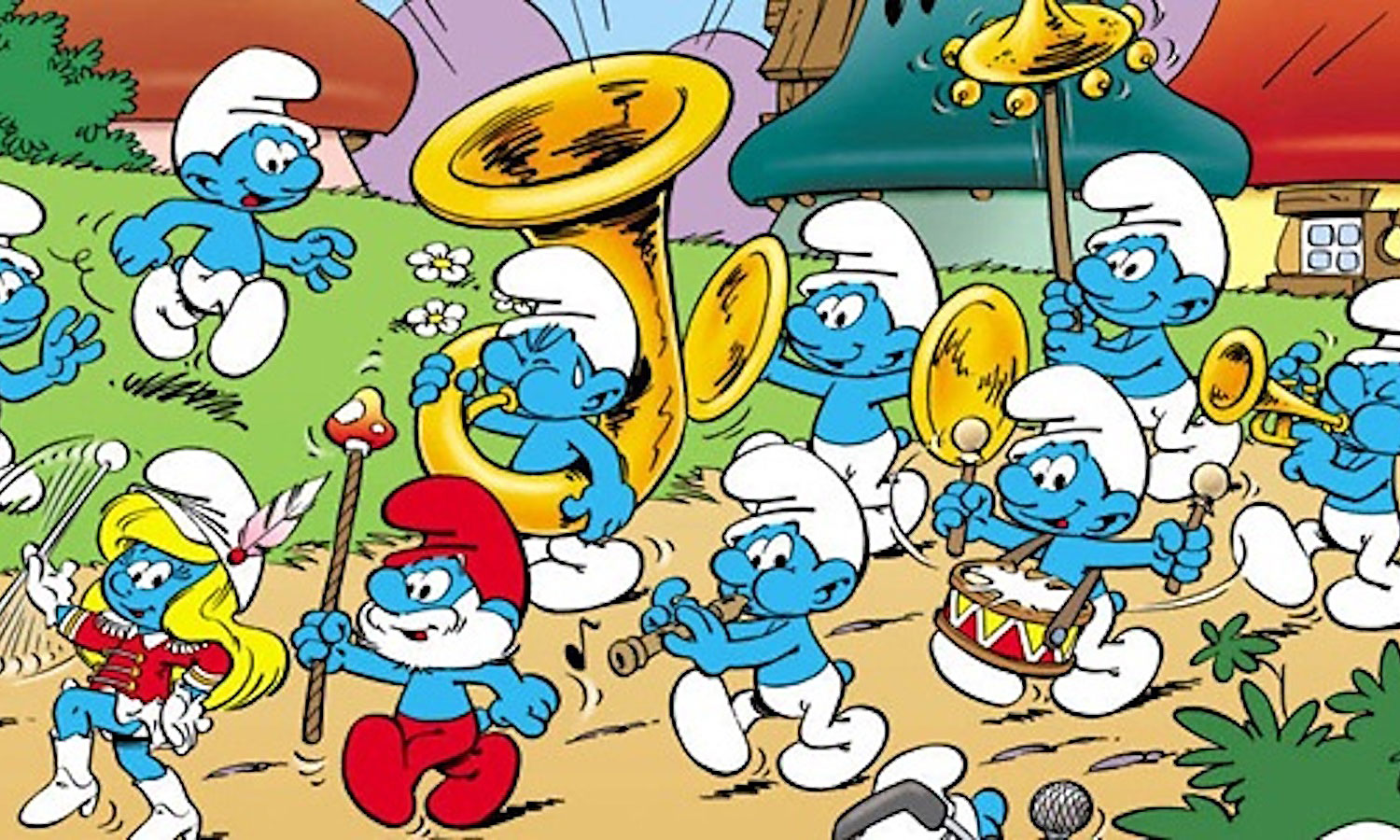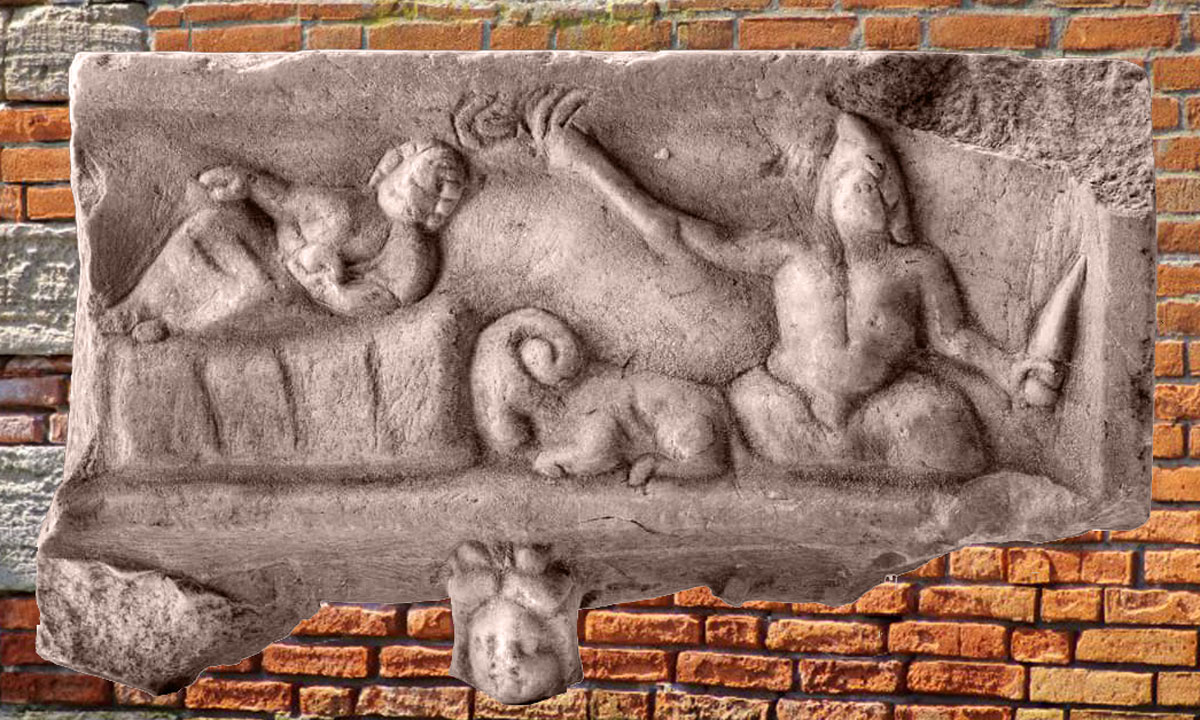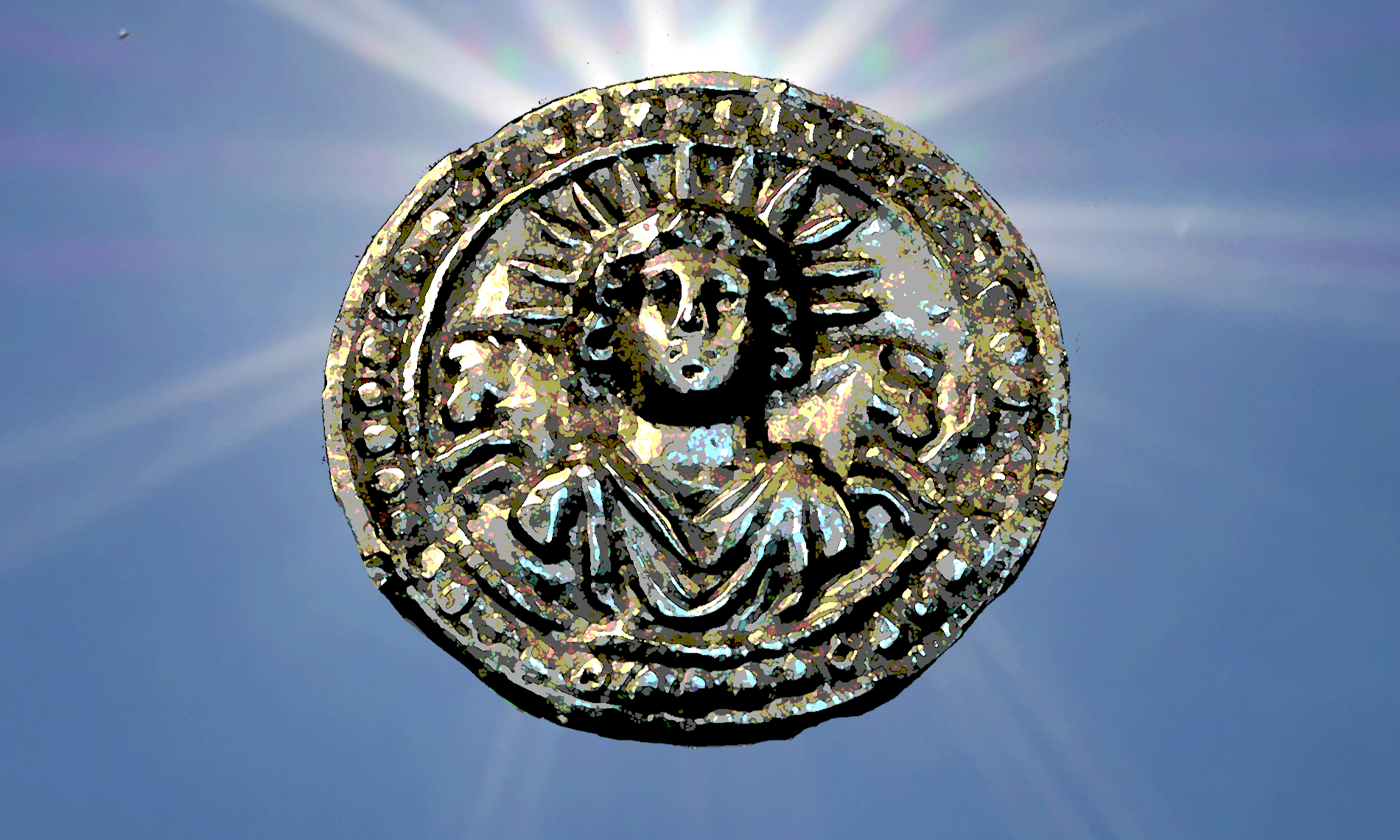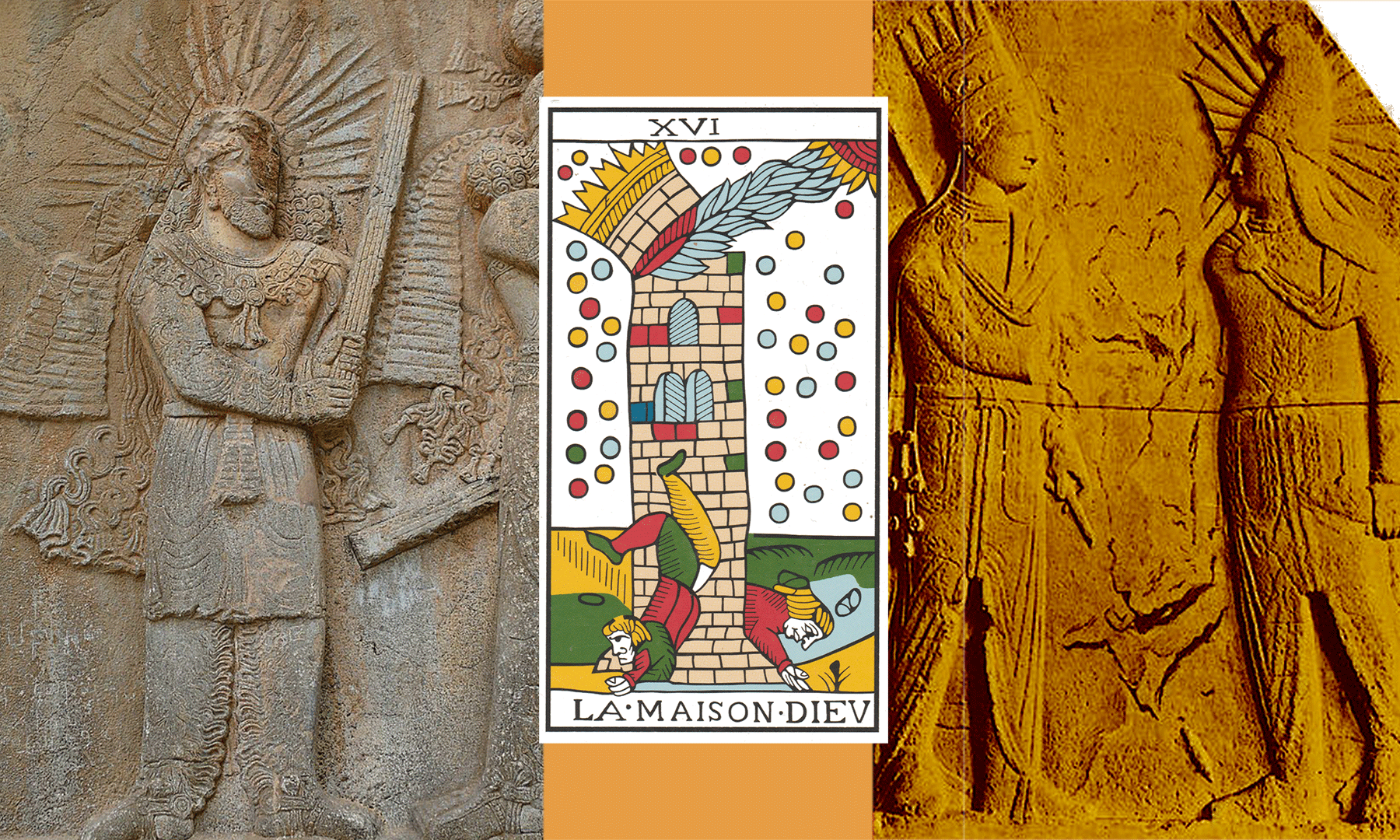
And the Jesus cross was printed on Mithras
I have already devoted two articles to this Christ Mithras whose lasting reign in the East makes us forget the importance of his influence in Rome but also in Celtic lands. There is a certain confusion — not to say a total confusion — between him and Jesus … whose name necessarily evokes another Christ — the only one currently admitted. The only one also whose historical existence is more than doubtful.
Mithra or Mitra or Mithras is a deity of the ancient Persians and other peoples of India. It appeared in the 16th century before the common era among the peoples of Central Eurasia. However, its origin seems much older. Mithras was venerated in the Roman Empire until the 5th century AD. was represented in the form of a young man with almost always a Phrygian cap, a green tunic and a coat floating on his left shoulder; he was armed with a sword which he plunged into the neck of a bull.
The Phrygian cap
The Phrygian cap derives its symbolism of freedom from its resemblance to the pileuschapeau in Latin that was adorned by slaves freed from the Roman Empire to affirm their liberation. In the United States, it was a symbol of freedom during the War of Independence and remained present on the flag of New York State.
This cap was revived in France in the early summer of 1790 as a symbol of freedom and civility, hence its name as the «cap of freedom». The Phrygian cap became a symbol of the French Revolution and from the autumn of 1793 to July 1794 (Reign of Terror); it was worn in many administrative communities of the country. Since the French Revolution, the Phrygian cap has adorned Marianne, the allegorical figure of the French Republic. It is also worn by the Patriotes of the 1837-39 rebellion — the hero of Quebec nationalism — and appears on several Latin American flags and coats of arms. (source)
It is also the cap of the Smurfs, the funny elves created by Peyo. If the Great Smurf wears the red cap of the revolutionaries of 1789, the other Smurfs and the Smurf wear the white Roman headdress, that of the freed slaves.
Like his colleagues Hergé and Edgar-Pierre Jacobs, Peyo has filled his accounts with allusions relevant to mythology, the science of all sciences, and much forgotten by historians who take legends out of the field of their discipline. Which I deplore. There is more truth in tales and legends than in most history textbooks.

The unconscious and the superego
In the golden language, Mithras can write Ra, together with Ra. In the language of the goslings there is a myth of Ra, the other name of Rama, avatar of the god Mars. The parallel between Mars, the warrior god, and the epic Rama has not escaped me. Moreover, Mars in verlan gives: sram or s-ram. Is it Ram? You have to tell me…
If Christianity had been arrested in its growth by some mortal disease, the world would have been mithraic.
On the other hand, I have not found or read anywhere that Mithras is one with Esaus. This is an intuition. Misleading? Some are. Yet the intuitions of the seers are more likely to be revealing. Revelations, I have, it is not lacking. During my sleep, I receive the teaching given by higher beings. At first I thought it was my unconscious. Like the soul, it is a suitcase word that covers many realities. The omnipresence of the unconscious comes from Freud and psychoanalysis. It used to be called something else.
The awakened has accomplished this feat: to unify the clear consciousness and the unconscious. This presupposes the elect of the superego. Freud invented the word and the concept. For him, the superego is the consideration of what has been internalized through the education received. It is a set of values learned, especially in the family circle, which correspond to morality, good, and what makes it possible to be recognized and loved at the level of society.
Since Freud, most of his concepts have been enriched, if not hijacked, by other authors: psychoanalysts Carl Gustav Jung or Wilhelm Reich, or theoreticians of consciousness like Carlos Castaneda, the nagual writer, or Lafayette Ronald Hubbard, founder of Scientology. For Castaneda, the superego is a compact layer of emotional concrete that covers the unconscious and prevents access. The clear consciousness cannot penetrate into the depths of the mind. This is also my point of view as well as that of my benefactor.
Mithras in Rome
This vision of the consciousness of the depths, that of the body, opposed and complementary to the clear consciousness, is a thousand leagues from the Greco-Latin thought. But it is very close to the cults of mystery.
In these neighbouring cultures, magic and mystery occupy the first places. Science and technology of modern appearance are inherited from earlier, highly developed civilizations. Everything the Romans no longer understood, they called it mysteries, found a god adapted to this magic and erected temples.
This was the fate of Mithras in Rome. Borrowed from Persia, Mithras was forcefully inserted into the Greco-Roman mythological web. Mithraism or mithriacism, the cult of Mithras, is a cult that appeared during the 2nd century B.C. in Persia, whose god and ritual are still very enigmatic today. During the following centuries, it spread throughout the Roman Empire until it reached its peak in the 3rd century. This cult is particularly popular among Roman soldiers and wealthy businessmen, especially through traders and craftsmen.
In Rome, mithriacism became popular at the end of the 1st century AD. Indeed, the first Roman mention of the cult of Mithras comes from the work of Plutarch. In his Parallel Lives, Plutarch explains that the Romans discovered Mithras in – 66, during the war of Pompey against the pirates of Cilicia. (source)

Mythological addition
As usual in the Roman tradition, mythology was modified each time a new god, coming from a military conquest more or less distant, joined the extensible pantheon of ancient Rome. Traditional mythology was then modified as follows:
After the creation of the World, Saturn takes power, dethroned by his son Jupiter. Order is restored in the Universe until Phaeton borrows the solar tank from his father Sol, the Sun. He loses control, which leads to the devastation of the world. Mithras, born of a rock, appears. It brings forth a source that allows nature to be reborn. (source)
Phaeton and the episode of the solar tank coming out of its trajectory, I already told it, and I will come back to it at the end of the article.
The sacrifice of the bull
This mythological addition probably seemed insufficient. It was useful to anchor the new god more deeply in the previous mythological frame. The Roman editor had other elements from Persia or India that he did not know how to relate to the accepted legend, until he imagined the following.
Mithras must perform another test: the capture of the Bull. Note the astonishing parallel with the seventh of Heracles’ works — Hercules for the Romans. This allows us to date these events: they took place at the beginning of the astrological era of Taurus, from 4300 to 2150. (source)
“The young Mithras meets the primordial bull while it is grazing in the mountains. He grabs it by the horns and raises it, until the animal can no longer. The god then attaches it by the hind legs and loads it on his shoulders. This trial is called the transitus. When Mithras arrives in the cave, later the Mithræum, a raven sent by the Sun asks him for a sacrifice. He then shoves his knife into the bull’s side, and his spine gushes out of the wheat and his blood turns into wine”. (source)
The pursuit, capture and mastery of the Bull also evoke this Zen tale, The Ten Bulls. Same story in Tibetan Buddhism, where an elephant takes the place of the bull. Likewise in Chinese Taoism, where the bull is replaced by a horse. Faithful to this tradition, I composed a new remake of this precious tale where the Bull becomes a Blue Tiger.
These parallels between the myths of the world plead for a distant and unique planetary culture. It existed eons ago. Cultivated by the young druid Ramos, it was spread by him until he became the first emperor of the world, Rama the invincible.

Sun Winner
Mithras pursues a fabulous Bull. He captures it, tames it and takes it to a cave where he puts it to death. This sacrifice nourishes nature, the cosmic order is restored. Sol bows and makes allegiance to it. Mithras takes the title of Sun invicible, Sol invictus. This myth makes Mithras responsible for the cosmic order. (source)
There is no doubt that these events never took place, because if Mitra the Elder emerges in India some six millennia ago, the previous legend is late, dating only from Roman times. In my humble opinion, if Mithras deserves this title of son of the sun, it is because he really is. Let me explain. It was not born by our star, whose temperature is too high to serve as an incubator.
He was born and raised on the very large sun that illuminated the northern hemisphere for millennia. Hovering over the North Pole, Plato evokes it as an island in the sky or a flying temple. The great Greek philosopher calls it Hyperborea, which means literally above the North Pole.
In my opinion, Mitra the Elder belongs to the team of Terraformers, those ancient gods who came from the Great Bear on a wandering planet, according to the Sumerians, a gigantic spherical angina that today we would call a mothership. This device emits a powerful light that eclipses that of our star. Mitra comes from it, perhaps he shared the command with his alter-ego Varuna. These two Sons of the Unbeaten Sun deserve to bear this title themselves. Persia has forgotten Varuna, it has retained only its false twin Mitra, which was written without h.
Phaeton 2, the return
Phaeton and the episode of the solar tank that comes out of its trajectory, I have already told and commented in Phaeton Son of the Sun. And I have also told, much more recently, that the chariot of the Sun is yet another name for Atlantis, the island as brilliant as the mother ship Hyperborea. And the Atlantis trip, Phaéton, is not to blame. Nor is it due to an Atlas pilot error. It is simply the revenge of a jealous god. And not just any, the god of the gods, the great Zeus himself…
But that’s another story. Mitra the Elder intervened several millennia before the fall of Atlantis. For its first landing on Terra, Atlantis landed on the ocean that bears its name. Atlas not yet born, who was piloting the great flying island? Mitra the Elder himself.

The crown is on the head of the ego-filled Chariot, the monkey of The Wheel of Fortune idem, and it falls from The Tower, the awakening.
Unveiled Mystery
If the cult takes its source in Mithræum, the original cave, the cult of Mithras once democratized is exercised in temples also called mithræa. These places are originally natural caves, but artificial and cramped constructions will imitate them later, dark and without windows. These ritual places never welcome more than 40 people.
The practitioners of this mystery cult were called Soldiers, a bit like those of my readers who practice grouped astral flight, and that by joke or fidelity to an ancient tradition, I named the Flying Wolves. Mystery worship implies that we understand nothing about it today. This is not surprising. Our E”poque cares about awakening like a jinx. Few initiates manage to make their voice heard in this discordant chaos where it is only a question of money, profit, investment, expenditure and material acquisitions in contrast to the initiatory tradition of the awakened.
When the Soldier is initiated into a den, a veritable ‘barracks’ of darkness, a crown is offered to him by sword, then fitted on his head. He is invited to remove it from his hand and drop it, on his shoulder for example, saying that Mithras is his crown.” From that moment on, he never crowned himself as proof of his commitment and then became a soldier of Mithras. (source)
The familiars of the initiatory Tarot said of Marseilles know well what the crown represents. It is that of the ego. It appears in arcane 10, on the head of the little monkey of The Wheel of Fortune. But above all, it is represented in the arcane 16 House of God, where it falls, exactly as in the Mithraic ritual. The crown chakra has just opened, the ego finally falters: it is awakening. The ego is the only part of you that will never know awakening, say the Tibetan Lamas.
The ego is the only part of human being which will not know awakening



